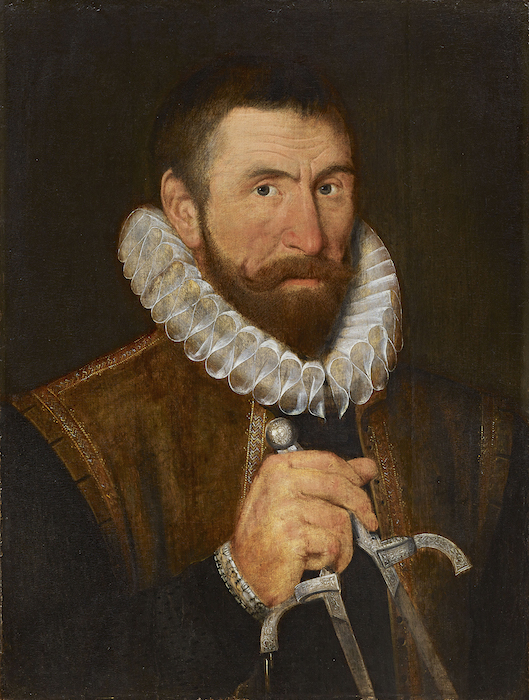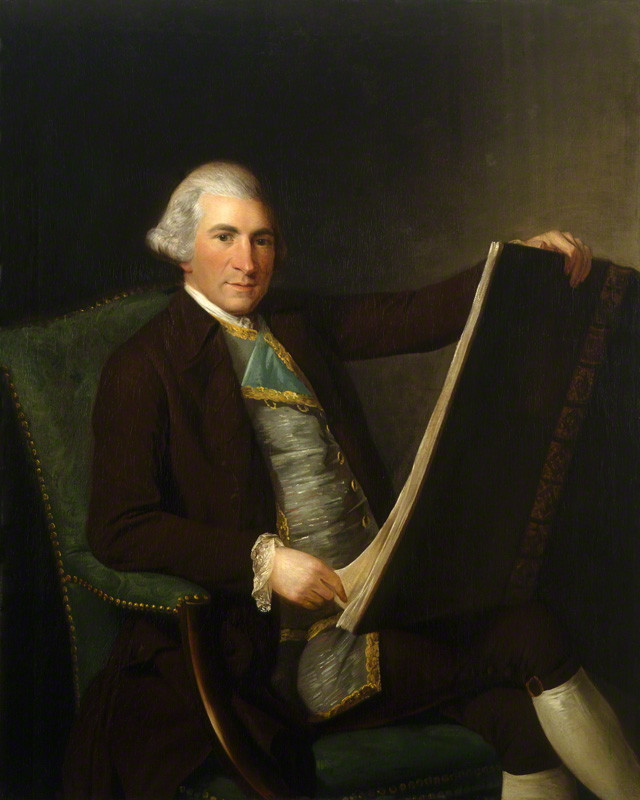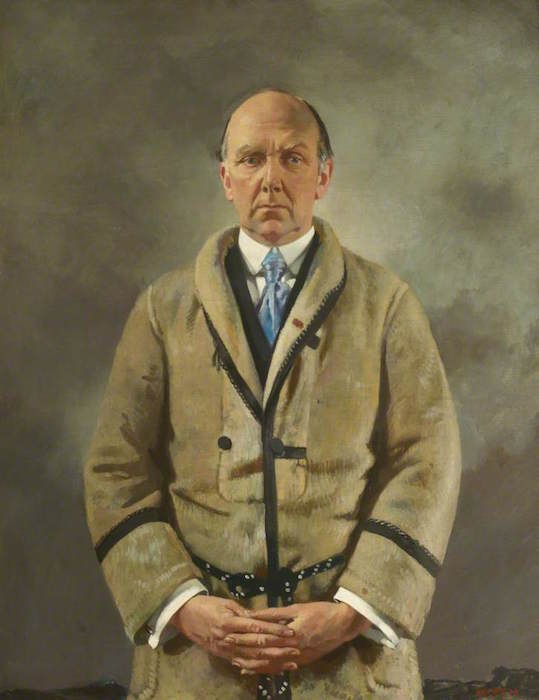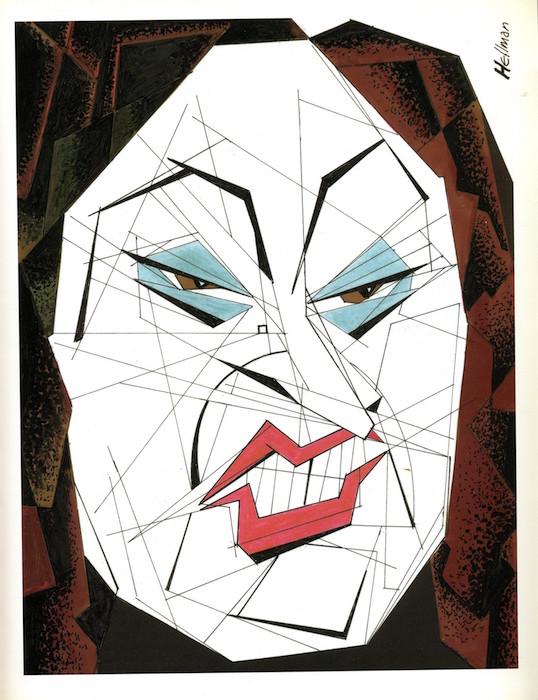What does a (British) architect look like? These days he (yes, usually he) might be distinguished by a deeply coloured shirt combined with neo-Corbusian round spectacles; half a century ago he would have sported a bow tie and a neat moustache. But the fact is that most architects look unremarkable – they have to appear competent, after all. And this has always been the case.

Ralph Simons (Symons), c. 1595, artist unknown. National Portrait Gallery, London
The National Portrait Gallery recently acquired the original of the first known portrait of an architect. Painted in c. 1595, it depicts Ralph Simons, or Symons, an architect-mason who worked in Cambridge, and was responsible for the Second Court of St John’s College. He is dressed simply, in a leather jerkin, but with a fashionable ruff, and he wears the pointed beard and luxuriant moustache typical of men of his time. In other words, Simons looks perfectly ordinary. All that marks him out as an architect is that he carries a large ornamented pair of compasses (what are called ‘dividers’ these days) in his right hand. The accompanying wall panel notes, alarmingly, that these ‘would have taken the form of a dagger when closed’.
This portrait is the earliest known example of what became the conventional manner of depicting an architect by having him holding one of these instruments of his profession. A century or so later, Kneller’s ‘Kit-Cat’ portrait of Sir John Vanbrugh shows the architect of Castle Howard also holding a pair of compasses. Soon afterwards, Jonathan Richardson’s portrait of Vanbrugh’s critic Lord Burlington shows the Palladian propagandist, again holding compasses. In the triple portrait of leading members of the Royal Academy of Arts in 1777 by J.F. Rigaud, Sir William Chambers is distinguished from Joseph Wilton and Sir Joshua Reynolds by having his left hand resting on a pair of compasses on top of an architectural drawing while in his right hand is a right-angle square. The contemporary portrait of John Soane by Christopher Hunneman also shows the ambitious young architect dangling a pair of compasses from his left hand. (Significantly, perhaps, the later portrait of the mature, successful, knighted Soane by Sir Thomas Lawrence gives no clues as to his profession.)

Robert Adam, c. 1770–74, attributed to George Willison. National Portrait Gallery, London
This tradition continued. The portrait of Pugin by his friend J.R. Herbert, painted in 1845, shows him drawing, with compasses in his right hand and a ruler in his left. And in the portrait by J.P. Knight of Pugin’s more professional collaborator on the New Palace of Westminster, Sir Charles Barry holds his pair of compasses aloft in his right hand while his elbow rests on a plan of the Victoria Tower on a table. This portrait therefore uses another trope for depicting architects: including a drawing of a design by the master. Another instance is Kneller’s portrait of Sir Christopher Wren, with him holding compasses in his right hand, resting on a ground plan of St Paul’s Cathedral. Occasionally, however, the key is a book rather than a drawing. The painting of Robert Adam attributed to George Willison in the NPG shows the ambitious Scot perusing a huge leather-bound folio volume which rests on his knee. This is almost certainly his own Ruins of the Palace of the Emperor Diocletian at Spalatro in Dalmatia, which he published in 1764.
Then there is the trope of depicting a building rather than a drawing. The other familiar portrait of Wren shows the cathedral itself in the distance, beyond a half-drawn curtain. The portrait of Burlington, similarly, depicts the ‘Bagnio’ at Chiswick in the background. Many of the portraits of presidents of the Royal Institute of British Architects employ these various devices, the ultimate being Frank Dicksee’s painting of John Belcher. This has everything. The successful Edwardian architect holds an elevation drawing of Electra House in Moorgate, a model of the dome of which stands on an adjacent table, while the background appears to be part of Hamo Thornycroft’s sculptured frieze on the Institute of Chartered Accountants – the building that made Belcher’s name – against which a T-square leans. All that is missing are compasses.

Leonard A. Scott Stokes (1858–1925), PRIBA, RGM, 1912, William Orpen. RIBA Library Drawings and Archives Collections, London
The presidential portraits that hang in 66 Portland Place include works by some distinguished artists. Francis Penrose was painted by Sargent while Alma-Tadema memorialised Lord Leighton’s architect, George Aitchison. And no less than four presidents were painted by William Orpen. He depicted that excellent country house architect, Guy Dawber, at his desk, drawing, with plans of a house pinned to the wall behind. But the best, by far, is Orpen’s three-quarter length portrait of Leonard Stokes in which all the usual devices and clichés are eschewed and the irascible architect of Roman Catholic churches is just shown wearing a sort of dressing gown.
Fine portraits of architects also hang in the hall of the Art-Workers’ Guild in Queen Square. Francis Dodd’s painting of his friend Charles Holden shows the disciple of Walt Whitman in a dreamy aesthetic pose, perhaps hard to equate with the future designer of Underground stations and Senate House. George Clausen’s portrait of Robert Weir Schultz shows the Scottish Arts & Crafts architect holding a burning cheroot between his fingers rather than compasses. And there are two by that wonderfully precise artist Meredith Frampton. One is of the fastidious C.F.A. Voysey; the other – now rather familiar and famous – is of Edwin Lutyens, in which the great man holds one of his special small tobacco pipes while on the table in front, on top of a drawing, is a box of matches with several half-burnt, in addition to a well-sharpened pencil.
Needless to say, this tradition is dying – and not just because architects don’t use compasses, or draw, any more (how do you represent computer-aided design software in a painting?). Although, in recent years, June Mendoza painted Owen Luder and the late Michael Manser was depicted (almost unrecognisably) by Patrick Heron, the RIBA now seems to prefer photographs and even considered banishing the presidential portraits to a single room on the pathetic grounds that ‘the building should not give off the atmosphere of a Masonic lodge’. But famous architects continue to be represented at the NPG by distinctive portraits. There is a bust of Richard Rogers by Eduardo Paolozzi (so maintaining a tradition started by those of Wren by Edward Pearce and of Hawksmoor by Henry Cheere). And the late Zaha Hadid is by Michael Craig-Martin in a ‘wall mounted LCD monitor/computer with integrated software’.

Louis Hellman’s caricature of Zaha Hadid, first published in Archi-Tetes: The Id in the Grid (Wiley, 2000). Courtesy the artist
This last seems absurdly elaborate and fragile. There is a better solution. The wittiest depictions of architects today are those by the brilliant cartoonist, Louis Hellman, who for decades has been satirising their pretentions and arrogance in the pages of The Architects’ Journal and Building Design. In his book Archi-Têtes: The Id in the Grid (Wiley, 2000), he set himself the challenge of representing architects in terms of both their styles and elements of their buildings. The results are a triumph: contrived certainly, but entertaining and certainly recognisable. The best, by far, as a portrait, is that of Zaha Hadid, whose most distinctive face is deconstructed into the jagged forms characteristic of her architectural drawings. It deserves to be purchased by the National Portrait Gallery.
From the October issue of Apollo: preview and subscribe here.













![Masterpiece [Re]discovery 2022. Photo: Ben Fisher Photography, courtesy of Masterpiece London](http://zephr.apollo-magazine.com/wp-content/uploads/2022/07/MPL2022_4263.jpg)
‘Like landscape, his objects seem to breathe’: Gordon Baldwin (1932–2025)